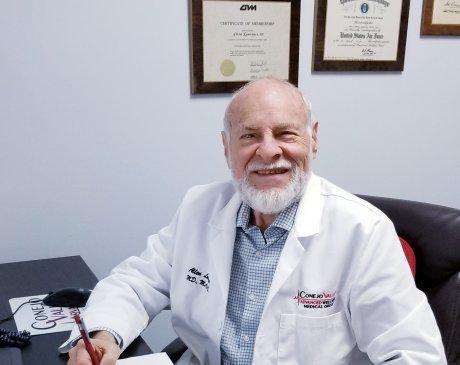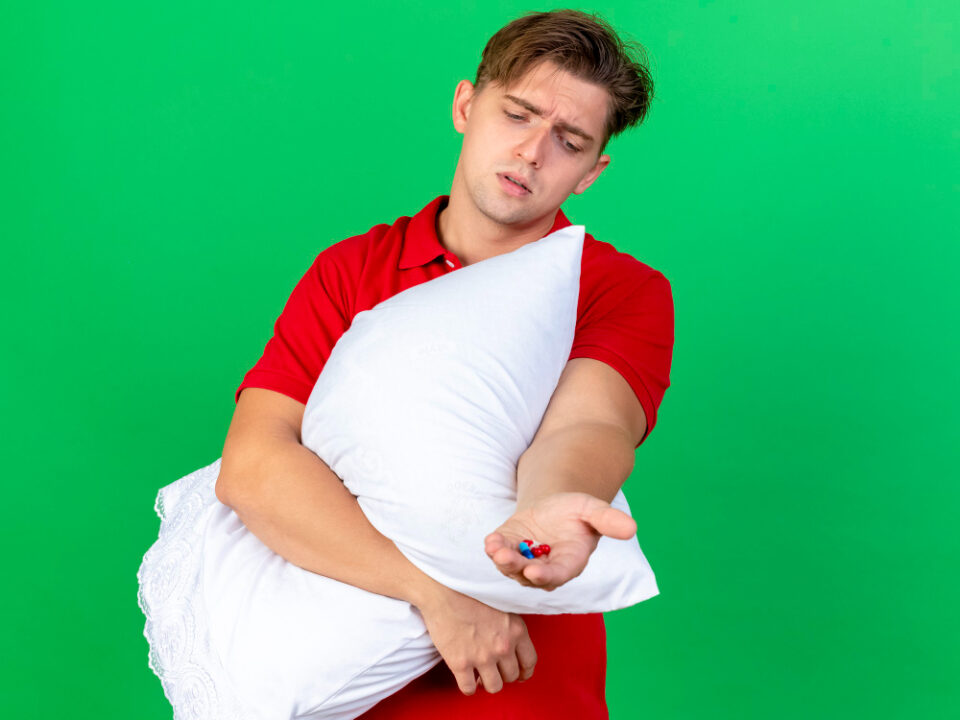- 21103 Vanowen St Woodland Hills, CA 91303 | Call us today!
- 310-879-9266
What is the Difference Between LowT and Andropause?

Testosterone, the primary male sex hormone, plays a crucial role in various bodily functions, including muscle mass, bone density, red blood cell production, and sexual health. As men age, it is common for testosterone levels to gradually decline. This decline can lead to conditions known as Low Testosterone (Low T) and/or Andropause, both of which can significantly impact a man’s quality of life. While these terms are often used interchangeably, they refer to different aspects of testosterone deficiency as well as different short and long-term effects on the male body. Understanding the distinction between Low T and Andropause is essential for the most accurate diagnosis and treatment.
Low Testosterone (Low T)
Low Testosterone, commonly referred to as Low T, is a medical condition characterized by a decrease in the production of testosterone. When this occurs the individuals blood level is lower than it should be yet not so low as to be deficient or absent. It is often termed insufficient and not in a state of deficiency. This low level of testosterone can affect men of various ages, in varying way. It is more prevalent in mid-life and older men. Low T can be caused by a variety of factors, including genetic conditions, injury or infection of the testes, chemotherapy, chronic diseases such as diabetes, and lifestyle factors like obesity and stress.
Symptoms of Low T may vary widely but often include: fatigue, decreased libido, erectile dysfunction, reduced muscle mass and strength, increased body fat, and mood changes such as anxiety, or irritability versus depression. These symptoms can significantly impact the individual’s daily life and overall well-being.
The ultimate diagnosis of Low T typically involves a combination of medical processes which may include a physical examination, a medical history, and blood tests to measure testosterone levels. Treatment options for Low T may include lifestyle changes, such as weight loss and exercise, as well as testosterone replacement therapy (TRT). TRT can be administered through injections, patches, gels, or pellets and aims to restore testosterone levels to a normal range, thereby alleviating symptoms.
Andropause
Andropause, often referred to as “male menopause,” because, similar to female menopause it is a specific phase in a man’s life characterized by a more significant and noticeable decline in testosterone levels. Andropause usually occurs later in middle age and beyond, in older men. Unlike Low T, which can occur at any age, Andropause is associated with the natural aging process and typically manifests in men over the age of 50.
The symptoms of Andropause are similar to those of Low T but can be more pronounced, more varied and affect the individual on a broader basis. Common symptoms include: decreased energy levels, reduced libido, erectile dysfunction, mood swings, irritability, loss of muscle mass and strength, increased body fat, and difficulty concentrating. Additionally, men experiencing Andropause may also face challenges such as decreased bone density (osteoporosis and increase risk of fractures from falling or other common activities) as well as an increased risk of cardiovascular disease, heart attack and/or stroke.
Andropause is often diagnosed through a combination of symptom assessment (same as with LowT) and blood tests to measure testosterone levels. It is important to note that Andropause is most often a gradual process, and symptoms can develop slowly over many years or they can simply show up one day as if it was coming out of nowhere.
The treatment of Andropause in order to attain full symptom Relief and prevention of future health and medical problems generally requires many changes in his life including: lifestyle modifications, such as regular exercise, a healthy diet, stress management, and adequate sleep and now commonly testosterone replacement therapy (TRT). Often TRT is the only thing that will or can help to alleviate negative signs and symptoms and improve the individual’s quality of life. As always, TRT when used to treat Andropause should be carefully monitored by an experienced healthcare provider due to potential risks and side effects, such as increased risk
of prostate issues and cardiovascular problems.
What Are The Key Differences Between Low T and Andropause?
While Low T and Andropause share many similarities, their key differences lie in their causes, age of onset, and the nature of their symptoms. Low T can occur at any age and may be caused by a variety of medical, genetic, or lifestyle factors. In contrast, Andropause is specifically associated with the natural aging process and typically affects men over the age of 50.
The symptoms of Low T can vary depending on the underlying cause and the individual’s health, whereas the symptoms of Andropause are generally more consistent and related to aging. Additionally, while both conditions can be treated with lifestyle changes and testosterone replacement therapy, the approach to treatment may differ based on the individual’s age, overall health (what medical problems they are dealing with), and their specific signs and symptoms.
Understanding the difference between Low Testosterone and Andropause is crucial for accurate diagnosis and effective treatment. Both conditions can significantly impact a man’s physical, emotional, and mental well-being, but with proper medical care and lifestyle adjustments, most men can manage their symptoms and maintain a high quality of life. If you suspect you are experiencing symptoms of Low T or Andropause, it is important to consult with a competent healthcare provider, one who regularly treats both of these problems, one who can provide a thorough evaluation and recommend appropriate treatment options which can be directly tailored to your specific needs. We suggest Advanced Wellness Medical as they have been doing exactly this for some 40+ years.

Article by Dr. Allen Lawrence, M.A., M.D., Ph.D.




